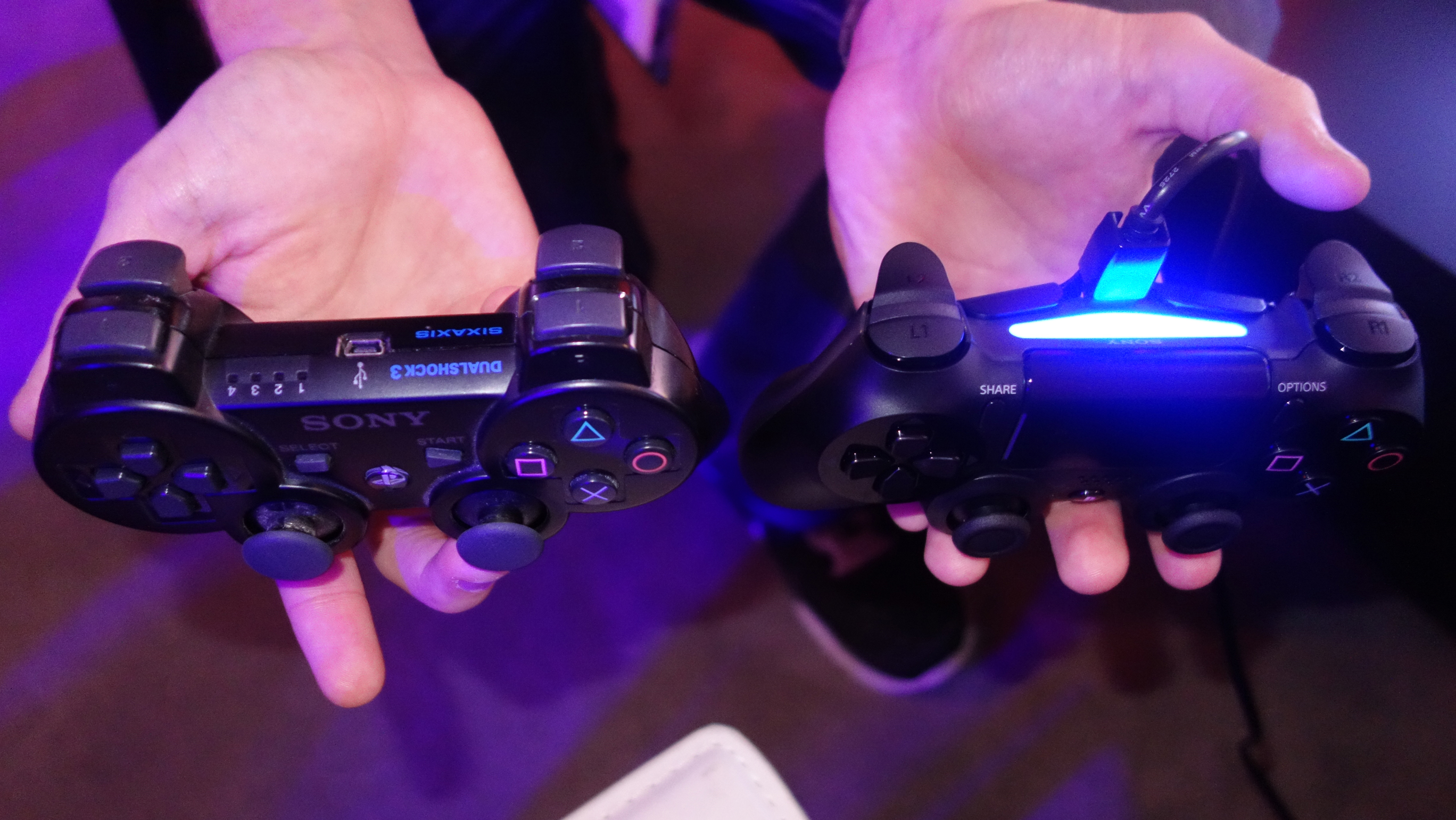Side-by-side: PS4 gamepad vs PS3 gamepad
Compare the PS4 controller with its PS3 predecessor in this photo face-off

There's no question about it, E3 2013 was a win for Sony. In addition to finally showing off the PS4's hardware and dominating Microsoft when it came to price and features, the company improved upon its older-gen controller tenfold.
The DualShock 4 gamepad is better than the PS3 controller by leaps-and-bounds. It's so much better that we may like it more than the Xbox One controller and its "40 innovations" over the already time-tested Xbox 360 gamepad.
To get a better perspective of why we're all for the DualShock 4, we brought along our DualShock 3 controller for a side-by-side photoshoot.
Pre-order the PS4 now from: Amazon | Zavvi | Tesco | Game
Front and center: touchpad
The most obvious change between the DualShock 4 and DualShock 3 is the new touchpad, which rests at the top of the PS4 controller.
This 2-inch wide, clickable slick spot supports two points of touch and smartphone-like swiping and pinch-to-zoom gestures.
Developers are still tinkering with uses for this mouse-like multitouch, experimenting with everything from inventory management to AI control.
Sign up for breaking news, reviews, opinion, top tech deals, and more.
It's certainly new technology that PS3 developers didn't have to think about last generation, and Xbox One game makers won't have the opportunity to take advantage of when the Xbox One launches in November.

From analog stinks to analog sticks
When we first grabbed the PS4 controller, the other alteration that grabbed our attention was the concave analog sticks. With divots in their center and raised rims around the top, the new right and left joysticks kept our thumbs in place during game demos.
This differs from the DualShock 3 controller, which features comparatively uncomfortable concave analog nubs and always caused our thumbs to easily move off-center.
Just as important, but less obvious to the naked eye, is the fact that the DualShock 4 controller's analog sticks are spaced further apart ever so slightly.
It's difficult to discern just what the extra space between the two sticks amounts to, but that added sliver of distance makes your thumb's reach less of a strain and the controller much more comfortable this time around.

Farewell, start and select
Hello, share and options. These new ancillary buttons replace start and select, which have been standard buttons since the first PlayStation console.
But with a new generation comes new functionality and altered placement. These buttons have been pushed further left and right on the controller instead of dead center like on PS3.
Also making room for the touchpad in the center is the PS button, which has been relocated further down the controller. It rests below the new, still mysterious mono speaker.
The remainder of the DualShock 4 controller's front side remains the same, with a familiar D-Pad on the left and four face buttons on the right.

Top of its game: Head-and-shoulders better
To say the PS4 controller is head-and-shoulders better than the PS3 controller would be driving right at one of its biggest improvements: the shoulder buttons.
Sony had the right idea in making the PS3's L1 and R2 shoulder triggers analog so that gamers could feel as if they were stepping on a gas pedal or holding down a gun's firing pin at different degrees.
But their concave, sloping-downward design made slippage an all-too-common problem.
Pointer fingers can now rest easy, as Sony reversed the trigger design by creating concave dips, taking a cue from the Xbox 360's left and right shoulder triggers.
The L1 and L2 buttons are slightly altered, too, and all of the shoulder buttons are stamped with L1, L2, R1, R2, instead of PS3's letter-less numbering system.

Light bar lighting the way
Being able to tell which player you are on PS4 vs PS3 is done in much more next-gen fashion thanks to the DualShock 4 controller's light bar.
The light bar's three LEDs, which can illuminate in various colors, replace PS4's four tiny red LEDs that were effective, but not very flashy.
